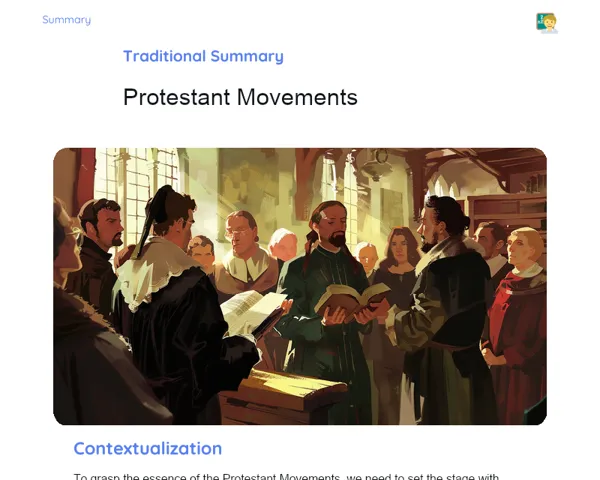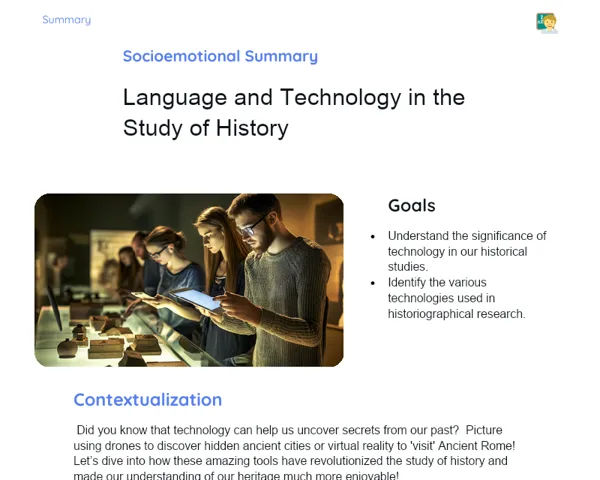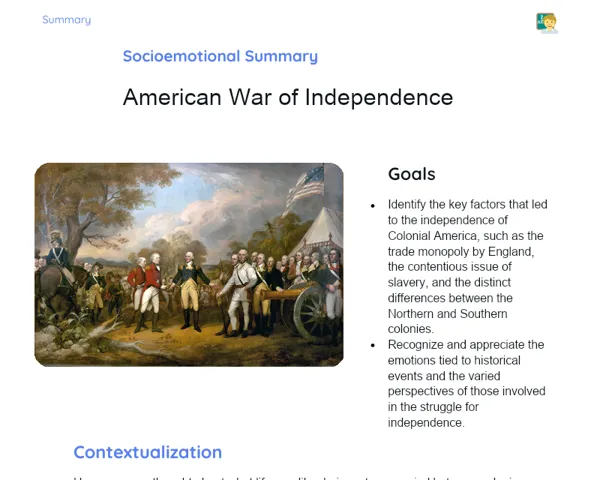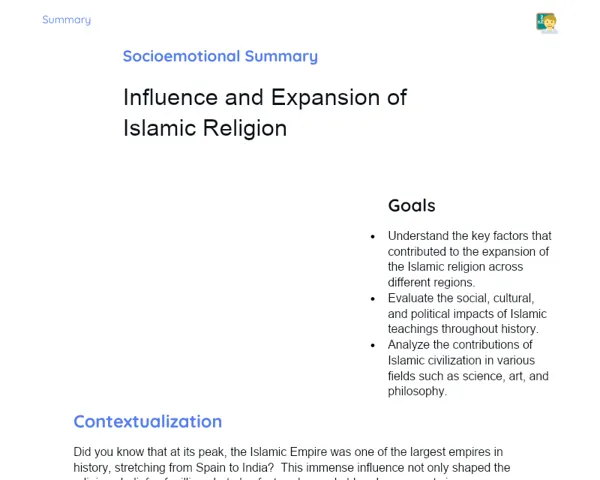Socioemotional Summary Conclusion
Goals
1. Grasp the political and social framework of Ancient Rome during its monarchy and republic phases.
2. Understand the historical context that led to the shift from monarchy to republic and eventually to the Roman Empire.
Contextualization
Have you ever wondered how Ancient Rome saw dramatic political changes that influenced the entire Western world? The shift from monarchy to the Roman Republic serves as a brilliant example of how feelings, beliefs, and governance mix together to bring lasting change. Let’s delve into these periods and see how the events of the past can help guide us in handling our own emotions and decisions.
Exercising Your Knowledge
Formation of the Roman Monarchy
The Roman monarchy marks the earliest phase of Rome’s history, beginning with its traditional founding in 753 BC and ending with the expulsion of the last ruler, Tarquin the Proud, in 509 BC. This era saw the creation of the very first political and social setups that laid the groundwork for Roman civilization. Each king introduced reforms which helped establish the cultural, religious, and administrative bases for what Rome would later become.
-
Foundation of Rome: As the legend goes, Rome was founded by Romulus who became its first king. The story, wrapped in myth, also tells of a she-wolf who nurtured Romulus and his brother Remus.
-
Etruscan Kings: The final three kings of Rome, including Tarquin the Proud, were from the Etruscan community, showcasing early foreign influence on the city.
-
Popular Discontent: The misuse of power by the last few kings, particularly Tarquin the Proud, stirred significant unrest among the Romans, which eventually led to the revolutionary movement that birthed the republic.
Transition to the Republic
The move from a monarchy to a republican form of governance was a pivotal moment in Roman history, taking place in 509 BC. Driven by popular uprising against the oppressive reign of the last king, this period saw the creation of new institutions that allowed citizens to participate more actively in politics. Emotions such as the yearning for justice and freedom played a key part in this monumental transition.
-
Revolution against the Monarchy: The bold uprising against Tarquin the Proud eventually led to his expulsion and marked the end of monarchical rule.
-
Creation of the Senate: With the birth of the republic, the Roman Senate was established as a council of the aristocracy that advised on governance matters.
-
Popular Assemblies: The republic introduced assemblies like the Centuriate and Tribal Assemblies, granting common citizens a stronger voice in state matters.
Conflict between Patricians and Plebeians
Throughout the Roman republic, there was an ongoing tussle between the patricians (the aristocratic class) and the plebeians (the common folk) over political rights and power. This social friction led to the creation of new institutions striving to balance power and ensure fairness. The dynamics of this conflict highlight how human emotions can drive shifts in power and political decision-making.
-
Tribune of the Plebs: As a direct response to the demands of the plebeians, the role of the Tribune of the Plebs was introduced, empowered with the ability to veto policies that were against the interests of the common people.
-
Twelve Tables: These laws served as the first formal codification of citizens' rights and responsibilities, promoting transparency and equality between different classes.
-
Struggles for Equity: The ongoing disputes between the patricians and plebeians prompted multiple reforms over time, gradually reducing inequalities between these social groups.
Key Terms
-
Roman Monarchy: The early period in Rome’s history (753-509 BC), ruled by kings.
-
Roman Republic: The form of government instituted after the fall of the monarchy, known for its blend of aristocratic and democratic elements.
-
Patricians: The elite, aristocratic class in Rome who initially held most of the governmental and religious power.
-
Plebeians: The common people of Rome who often fought for rights equal to those enjoyed by the patricians.
-
Senate: A council of aristocrats that played a significant advisory role in the republican government.
-
Tribune of the Plebs: An office established to safeguard the interests of the plebeians, with the authority to veto decisions that were harmful to them.
For Reflection
-
How did emotions like fear and the quest for justice drive the revolution against Tarquin the Proud and pave the way for the republic?
-
In what ways do the conflicts between the patricians and plebeians mirror the ongoing struggles for fairness and justice in today’s society?
-
How can the lessons from Rome's political transition guide us in making responsible and thoughtful decisions in our daily lives?
Important Conclusions
-
Ancient Rome experienced dramatic political transformations, transitioning from a monarchy to a republic, which not only reshaped its society but also influenced the broader tapestry of Western history.
-
The Roman monarchy was significant for laying down the early foundations through its seven kings, each contributing to the growth of political, religious, and social institutions.
-
The republic emerged from a collective rejection of despotic rule, leading to new political structures that encouraged wider citizen involvement.
-
Conflicts between the patricians and plebeians underscored the fight for equality and social justice, leading to the creation of roles and laws intended to balance power among the groups.
-
The eventual crisis of the republic, marked by internal strife and power consolidation, set the stage for the rise of the Roman Empire with Augustus as its first emperor.
Impacts on Society
Reflecting on the transition from monarchy to republic in Rome teaches us about the power of human emotions in bringing about major political and social shifts. In our present-day society, understanding such historical shifts helps us appreciate the underlying emotional and behavioural patterns that influence our own choices and governance. The age-old struggles for justice and equal rights, evident in the conflicts between patricians and plebeians, still resonate today as various groups continue to strive for their rightful place in society.
Moreover, learning about Rome's history reminds us of the dangers of authoritarian rule and the concentration of power, and reinforces the importance of robust democratic institutions that promote equal participation for all citizens.
Dealing with Emotions
When studying the political transformations of Ancient Rome, it helps to use the RULER method: begin by Recognising the emotions that arise while learning about the challenges and injustices of the time. Then, Understand what triggered these feelings—ask yourself, what in Rome's history stirs these emotions? Clearly Name the emotions, be it frustration, empathy, or curiosity.
After that, Express these feelings in a constructive manner, like maintaining a journal or discussing them with your colleagues. Finally, work on Regulating these emotions through practices such as mindfulness or meditation, ensuring a balanced approach while you delve into history.
Study Tips
-
Devise a study schedule that includes breaks for introspection, helping to keep your emotional state in check and improving focus.
-
Form study groups to exchange insights and debate different interpretations of historical events, thereby boosting understanding and empathy.
-
Leverage multimedia resources such as documentaries and podcasts to complement your reading and make learning more engaging.



